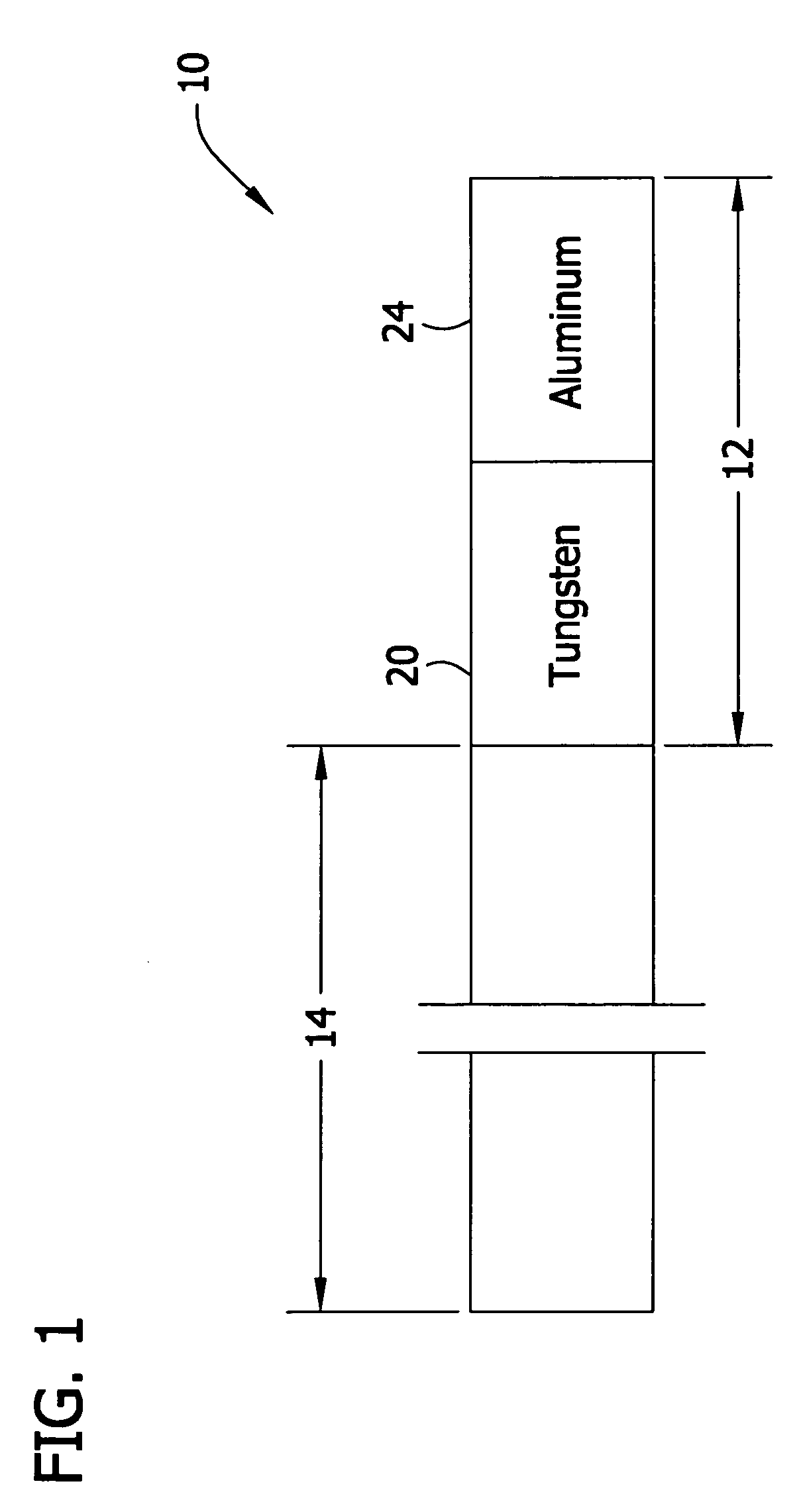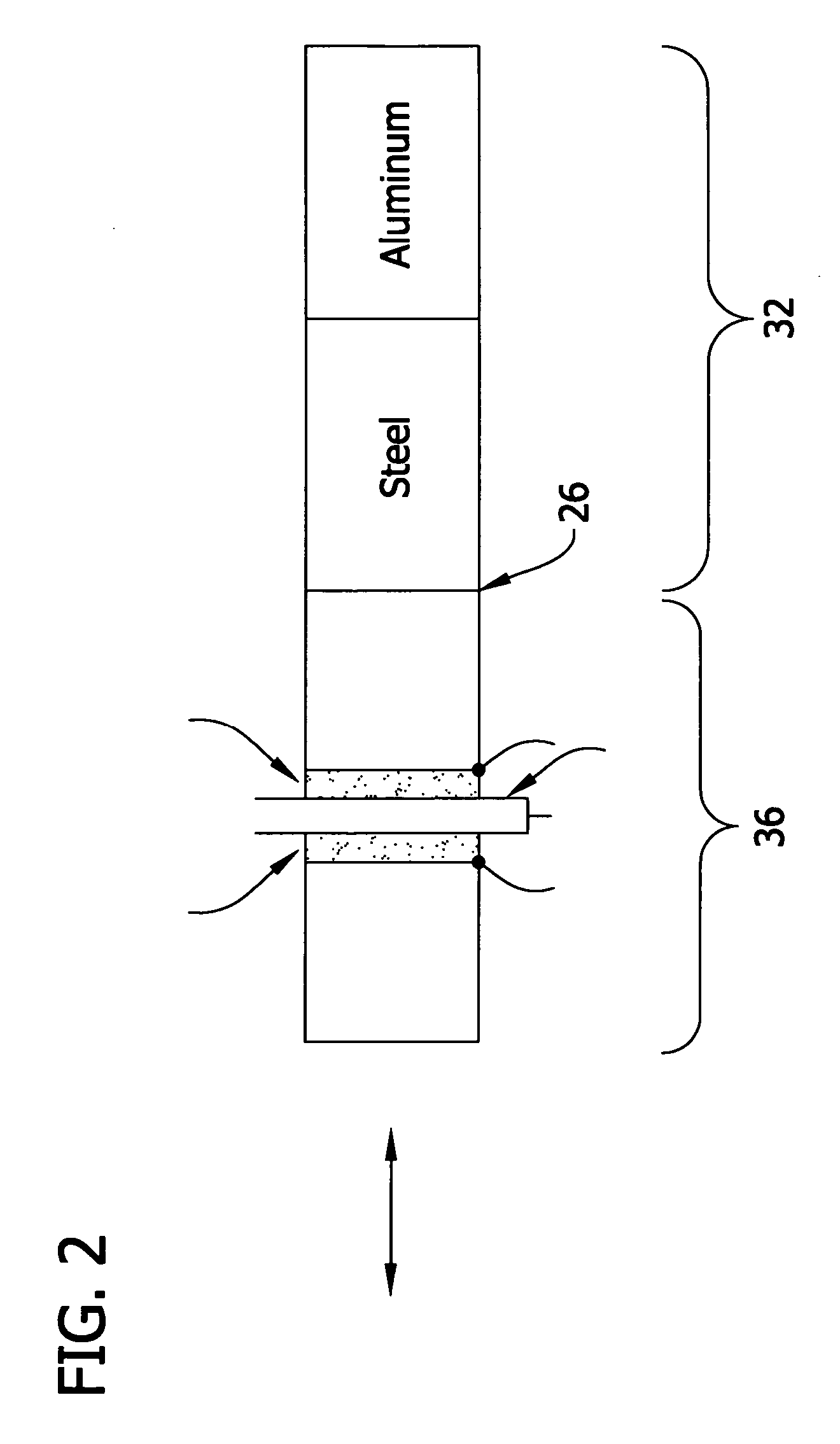Amplifying ultrasonic waveguides
a technology of ultrasonic waveguides and amplifiers, applied in the field of ultrasonic, can solve the problems of less efficient transmission of energy, unusable tools, overheating of transducers, etc., and achieve the effects of reducing stress and heat generation, improving amplification, and reducing the risk of modal coupling
- Summary
- Abstract
- Description
- Claims
- Application Information
AI Technical Summary
Benefits of technology
Problems solved by technology
Method used
Image
Examples
example 1
[0061] In this Example, a one-half wave ultrasonic waveguide comprising a hot isostatically pressed component body comprising one-quarter wave tungsten and one-quarter wave aluminum was produced. This one-half wave ultrasonic waveguide was then coupled to a commercially available resonant transducer (available from Zevex, Inc. (Salt Lake City, Utah)) to produce an ultrasonic assembly. The velocity gain and internal stress of this ultrasonic assembly was then evaluated and compared to the velocity gain and internal stress of a one wave conventional stepped horn assembly made from a one-half wave ultrasonic waveguide of tungsten and a conventional resonant transducer and the velocity gain and internal stress of a one-half wave tungsten waveguide / one-half wave resonant transducer assembly. The conventional stepped horn assembly was made using tungsten in a conventional stepped horn process to form the one-half waveguide of tungsten and connecting the one-half waveguide of tungsten with...
PUM
 Login to View More
Login to View More Abstract
Description
Claims
Application Information
 Login to View More
Login to View More - R&D
- Intellectual Property
- Life Sciences
- Materials
- Tech Scout
- Unparalleled Data Quality
- Higher Quality Content
- 60% Fewer Hallucinations
Browse by: Latest US Patents, China's latest patents, Technical Efficacy Thesaurus, Application Domain, Technology Topic, Popular Technical Reports.
© 2025 PatSnap. All rights reserved.Legal|Privacy policy|Modern Slavery Act Transparency Statement|Sitemap|About US| Contact US: help@patsnap.com



